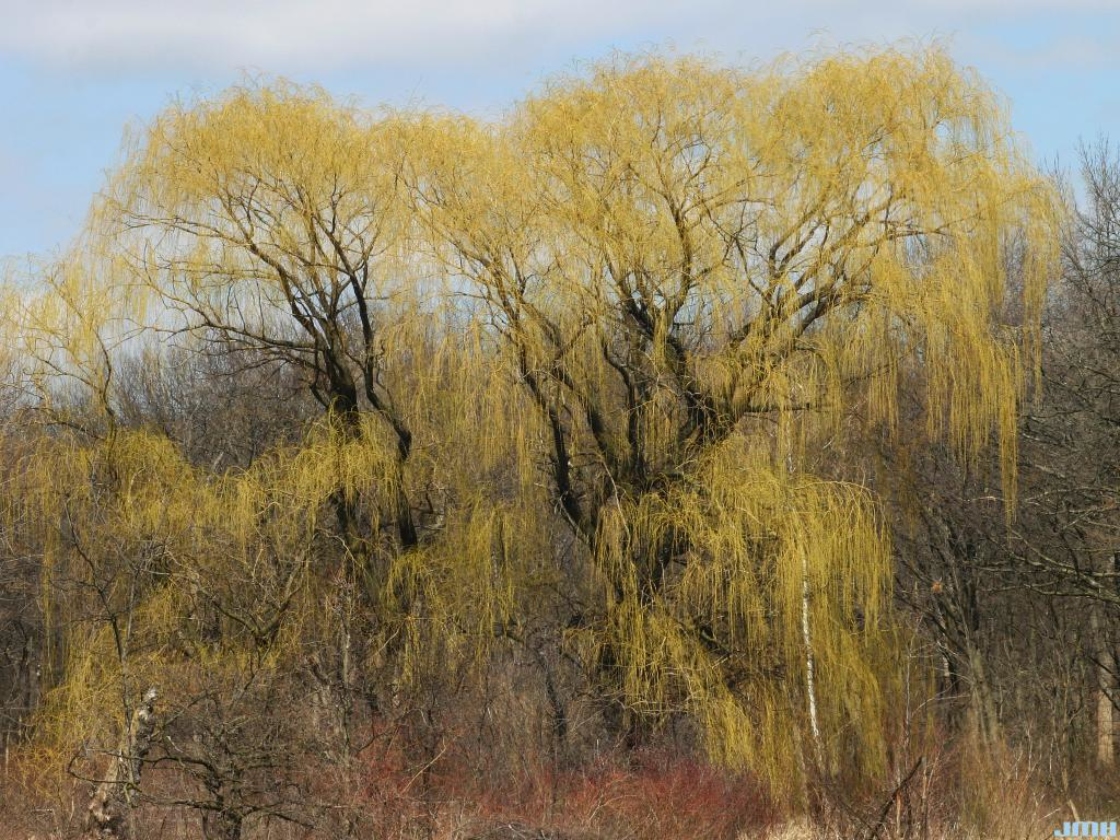Golden weeping willow is named for its brilliant yellow twigs and graceful, drooping form. Like all willows, this cultivar is very tolerant of wet sites. It is highly susceptible to storm damage.
Golden weeping willow is an upright willow that gets 50 to 75 feet tall and wide.
The golden weeping willow (Salix alba ‘Tristis’) is a stunning ornamental tree prized for its drooping branches and bright yellow twigs. Its graceful, flowing form makes it a favorite for landscapes, but also requires some management due to its fast growth rate. When provided ideal growing conditions, this beautiful willow can skyrocket upward at over 3 feet per year.
Understanding the quick development of the golden weeping willow will help you properly care for it. With the right pruning and maintenance you can highlight its elegantly cascading structure without overgrowth issues.
Growing Conditions That Fuel Fast Growth
The golden weeping willow thrives in moist, fertile soils and full sun. It flourishes near water sources like ponds, streams, or wetlands. These ideal conditions allow it to grow rapidly.
Specific factors that boost its quick vertical growth include:
- Rich, consistently moist soil. Loamy soils with good drainage are preferred.
- Ample water availability. Prefers consistently damp soil. Drought stress will slow growth.
- Full sun exposure for at least 6 hours daily. Sunlight fuels growth.
- Higher humidity. Thrives in riparian areas or humid climates.
- Warm environments. Grows best in USDA zones 2-8. Heat accelerates growth.
- Good nutrient availability. Periodic nitrogen fertilization promotes fast growth.
- Genetic propensity for rapid growth. Certain cultivars like ‘Tristis’ grow quicker than species plants.
When provided with these favorable conditions, the golden weeping willow lives up to its reputation as a fast grower.
Typical Height Increases Each Season
The golden weeping willow grows at a rapid rate, adding anywhere from 3 to 10 feet in height each year whenprovided optimal growing conditions.
Here are some guidelines for average size increases:
-
Year 1: Grows 3 feet or more from a young nursery tree. Establishes quickly after planting.
-
Year 2: Adds another 3 to 5 feet in height. Sends up thick, vertical shoots.
-
Year 3: Gains 4 to 6 feet as whorled side branches begin to droop downward.
-
Year 4: Develops weeping form, with 5 to 8 feet of new growth annually.
-
Year 5+: Matures around 75 feet tall, growing up to 10 feet per year before tapering off.
These growth rates ensure this large tree reaches mature heights of 75 to 100 feet tall within just 10 to 15 years after planting. Proper pruning helps manage and highlight its graceful, weeping form as it rockets skyward.
Caring for Fast-Growing Willows
The golden weeping willow’s stunning form comes with special care requirements. Here are some tips:
-
Water regularly – Provide consistent moisture, especially during droughts. Willows need damp soil.
-
Fertilize lightly – Avoid over-fertilizing, which causes fast, weak growth prone to breakage.
-
Prune yearly – Remove upright shoots and interior branches to maintain its weeping shape.
-
Protect from wind – Stake young trees and provide windscreens to prevent branch damage. Their flexible wood is vulnerable.
-
Monitor for pests/diseases – Prevent defoliation and dieback that can slow growth. Treat any issues promptly.
-
Remove suckers – Prune out vertical shoots from the root system to avoid dense thickets of new growth.
With proper siting, care, and pruning, the golden weeping willow’s rapid growth rate can be managed. Its striking form and dazzling color make this quick-growing tree a stunning focal point in larger landscapes. Embrace its lively growth as you shape it into a cascading golden masterpiece.
Wonder Woods Mini Golf-Opens May 24
East Side and West Side
Find on the Map
Enter keywords to search on the arboretum map.
How to grow a Weeping Willow – Salix babylonica – Fast Growing Graceful Tree
FAQ
How fast does a golden weeping willow grow?
What are the disadvantages of a weeping willow tree?
Is Golden Weeping Willow invasive?
What is the difference between a weeping willow and a golden weeping willow?
- The Ultimate Guide to Growing Strawberries in Raised Beds - August 8, 2025
- No-Dig Garden Beds: The Easiest Way to Grow a Beautiful Garden - August 6, 2025
- How to Protect and Preserve Wood for Raised Garden Beds - August 6, 2025

